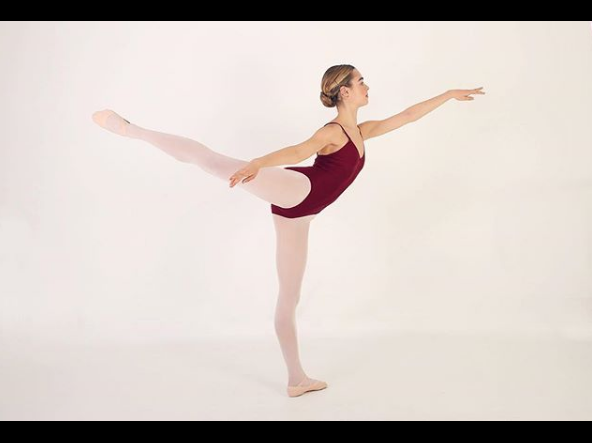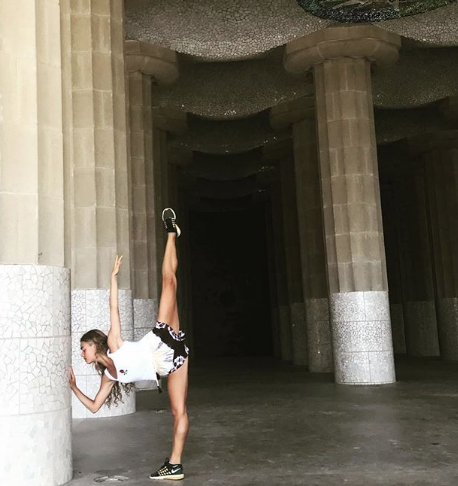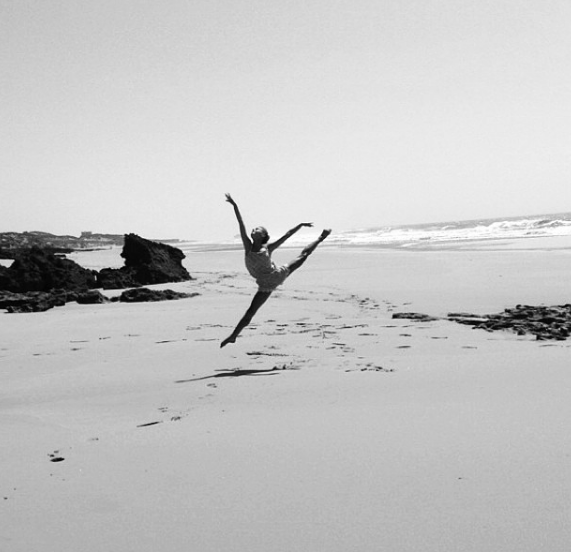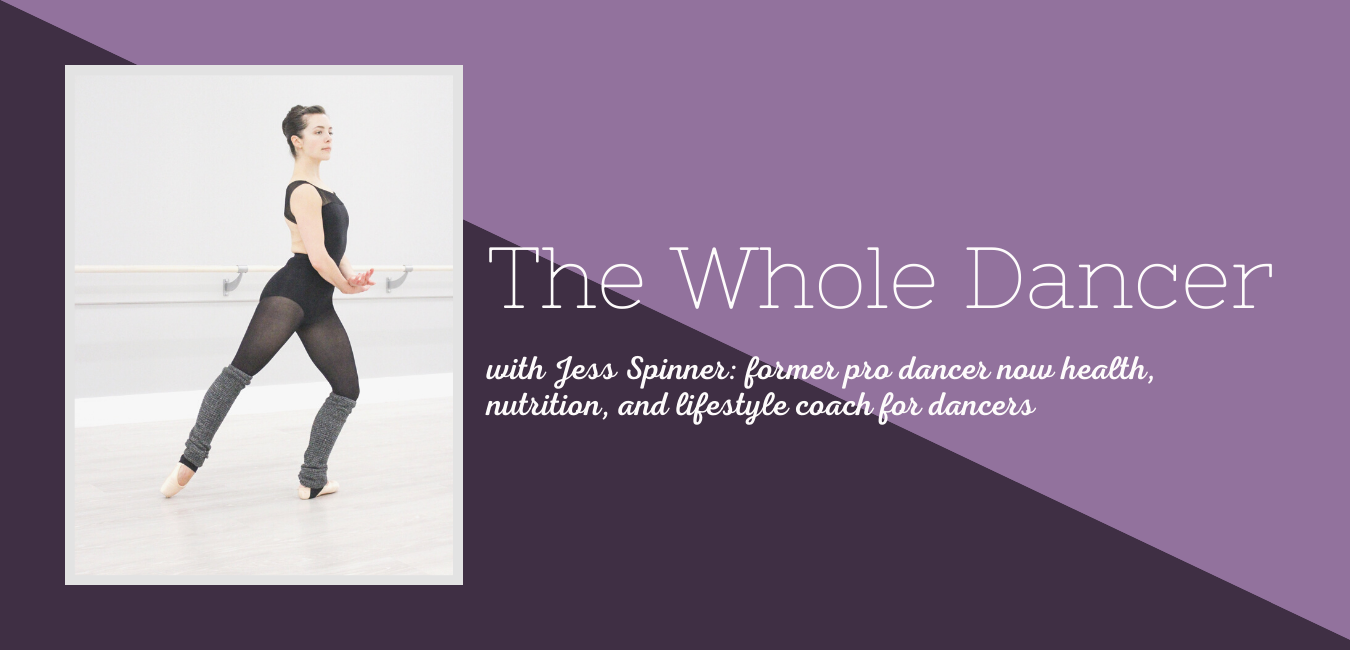When I was young, I was a free spirit, known by the nicknames “tigger” (the bouncy, excitable character from Winnie the Pooh) or “la salvage” which means “the wild one” in Italian… I think there was a theme going out that emphasized the freedom I felt.
But I was also determined, competitive and had perfectionist traits from an early age and these traits became a vulnerability.
I began dancing quite late into my life, I was 9, which when compared to girls who were dressed in ballet slippers at aged 3, it made me worry and stress over the technique and time I had to ‘make up’. I danced at my local village hall dance school, only a few minutes away from my family home in Burghfield Common.
It wasn’t a special school but just a school for those that loved to dance, however my natural talent stood out to my dance teacher and so she sent me off to audition for The Royal Ballet just after my 11th birthday. At age 11 I was accepted into The Royal ballet school MA’s and my passion for dance was flying. When I lost my place at the school two years later, I felt crushed.
At the time, I was hitting puberty and my body had changed a lot. This made me believe that it was my physique that stole me off my place which made me hate my body. The body I once loved, the body I was once proud of, I had turned against and disowned.

I wanted to break it into a million pieces and reform it in the ‘stereotypical slim dancers body’ that I now craved. After 2 months of losing my place I was diagnosed anorexic… I was consumed in what felt like a single breathe.
A few years later auditions for Upper school were arriving, but by this time I had been suffering from anorexia for 3 whole years. I was desperate to be accepted by an upper school dance college but I knew I wouldn’t be successful in the skeletal state I was in… so I quickly gained weight.
I didn’t recover, I simply gained weight. In a way this is beautiful because it showed that my passion for dancing was still there that much that I would gain weight for an opportunity to be at a dancer college. I was desperately trying to cling a hold of dancing as my anorexia was a master at sucking my passion for dancing and dancing itself away from me.
The real me wanted to catch her nails in a place at upper school but my anorexia wanted to claw it away from me… therefore we settled upon gaining weight but refusing to have therapy. But we all know that anorexia is a mental illness so this was bound to fail in time, which of course it did.
Amazingly I was accepted into Elmhurst School for Ballet upper school, (which is the sister school of the Birmingham Royal Ballet) with a full scholarship. My family is from very low income and we would have never been able to afford the extortionate school fees so this made me feel even more lucky than I already was. However, although I had guaranteed myself a place at the school and to the eye looked healthy, inside I had never felt more depressed and unlike me.

I was still just as ‘anorexic’ as I had ever been.
As soon as I started at Elmhurst that September after auditioning I began to relapse at a lightning speed. Within a month of being at the school I was sent home. Within the year I visited in and out of Elmhurst, hopelessly trying to keep hold of my place, yet it was no use as I was in a cycle of quick fixes and I never gave my mental state enough attention or treatment.
At the beginning of the second year of Elmhurst the school told me I had lost my place forever, and that they couldn’t keep me there because of my mental and physical health. This broke my heart, especially as I knew they weren’t asking me to leave because of my dancing but mostly because of my physique that was now at the point of needing hospitalization.
This made me feel that I had lost both The Royal Ballet and Elmhurst because of my appearance and for opposing reasons which simply made it hurt more.
However, losing my place at Elmhurst kick started my REAL recovery. I had intensive treatment, much of which was focused around my mental state, I restored my weight, re-built my relationships and most importantly I recaptured my passion for dancing.
Now, here I am 6 years later after beginning diagnosed with anorexia, I’ve finally waved my last bye-byes to anorexia and I am adventuring into my exciting chapter at The Urdang Academy, where I was successfully offered a place and a full scholarship to train. After everything I have been through, I am still dancing. You see, I was a dancer before I was an anorexic.
Dancing was always going to remain and it was my anorexia that had to leave.
If you’re anything like me, prior to falling ill with anorexia or an eating disorder mirrors didn’t bother you in the slightest. I could quite easily look in them and feel at ease. In the morning before school I’d check my hair and brush my teeth, pull on my blazer and tuck in my shirt.
 I never felt the need to check if my thighs touched before dragging on my skirt, I never paused to gaze at myself to think, ‘failure, fat, disgusting’. It just didn’t happen, I was happy with how I looked, I was confident in my skin.
I never felt the need to check if my thighs touched before dragging on my skirt, I never paused to gaze at myself to think, ‘failure, fat, disgusting’. It just didn’t happen, I was happy with how I looked, I was confident in my skin.
I was diagnosed anorexic when I was 13, and my relationship with mirrors had turned into a disaster. Actually a disaster is a light hearted way of putting what actually happened, the mirror to me was a monster with bright purple nails and amber stained teeth. The mirror was a soul-destroyer, happiness sucking nightmare.
My parents tried everything. Covering the mirrors with fabric, draping heavy curtains over them, hiding them in their loft or their bedroom. Soon I had no mirrors in the house to look at myself. So I started using reflections in the house windows and the glass from my Dads framed art work. I forgot that the glass I was using had beautiful art work behind it- I was blind to it.
All I saw when I looked at his framed art was my body. The windows facing out on the front of the house were see through and showed the world outside, the trees in the front garden and the people that walked past on the street, yet I was oblivious to the outside world and only saw my own numbing reflection. All I could see was myself, my body, my hate.
Suddenly when all that’s stripped away, what’s left? You look in the reflection and see someone you no longer recognise. Trust me, you can have a fresh relationship with the mirror that is fulfilling beyond your wildest wishes. No, you may not be the skinniest one in the room anymore. No you may not end up having the most defined arms or a six pack… But by the end of this you will be more free to love yourself and others.
You will become a better version of yourself, than you were before. The you, you were meant to be…
Your identity is not your reflection, your identity is your actions, your views and your effect on others.
My identity is no longer tied to that of the past. I no longer see my worry in my reflection, I now recognize myself in the mirror and my relationship with what I see is healing. My relationship with the mirror is a respect for my true self, I look, I recognize, I respect and I move on. Respecting your reflection is the most encouraging way to accept your reflection. Now… I’m the carefree young lady that my family and friends have so longed for. I can now enjoy life to the fullest.
Recovery and recovering from an eating disorder is different for everyone. Full stop. However, eating disorders are more likely to be developed within athletic and dance environments compared to others.

Elite athletes and dancers are under consistent pressure, and often they’ll have a natural competitive and determined nature. In environments where, ‘your body is your tool’ comparisons and unhealthy goals take place. Exposure to body-image issues and how others perceive your body is yet another worry building at the back of many athletes and dancers minds.
Perfectionism is another very common trait within athletes and dancers, which is a trait that often influences eating disorders.A large majority of athletes and dancers will develop perfectionist tendencies, which can make feelings of failure more detrimental. Viewing them as the end of the world, rather than a simple mistake.
Frequently athletes and dancers connect their self-worth to their weight, body size or overall appearance, and often athletes and dancers compete with one another, not only on their performance but also on their physique.
Athletes and dancers often suffer behind their successes, tv screens or smiles. Yet many struggle with eating disorders, even when all seems fine. If dancers can put on an entertaining show, then they can do the same within their lives, by showcasing that ‘all is fine’, by acting and performing to hide their struggles and secrets.

Yet eating disorders, a strong and overwhelming mental health condition, can ultimately end the careers of athletes and dancers. Being injury prone with a lack of energy is the greatest risk in both these careers, which are two things on the cards from eating disorders.
In terms of whether recovery is different, it’s hard to say as everyone suffers differently and everyone recovers differently. What works for someone might not work for someone else and vice versa.
However, I do believe that there are common differences. Such as, perhaps a higher level of pressure to exercise whilst recovering rather than not exercising, there is also the obvious difference that a dancer is often stood in tights and a leotard so will naturally be aware that after recovery they need to sustain a toned body – so therefore may experience again a higher level of pressure focused on their aesthetics (which in recovery you want to avoid as much as possible).
I am not saying that it is harder to recover as a dancer suffering with an eating disorder than a non-dancer suffering with an eating disorder, as recovery can not be compared but there may be added barriers that dancers have to hurdle that non-dancers may not necessarily be faced with.
For example, dancers must spend hours at a time in front of a mirror in comparison to non-dancers that may simply comb their hair or apply make up front of for 10 minutes in the morning. We can’t escape mirrors, but the difference for dancers is that they use them in their craft to improve.
There are many other barriers for a dancer to overcome in recovery which non-dancers might not experience. But either way, we all can recover.
My recovery process if drawn with a line on white paper looked like a mess, with ups and downs all over the place. The page would look like the next most terrifying rollercoaster design. Despite the mess my recovery journey looks, I wouldn’t change any of it.
The ups and downs are what made me stronger. There is no quick fix to recovery, and recovery is not linear. For anyone that tells you that their recovery process looks like a straight line, they are lying. But it’s not a bad thing for recovery not to be straight forward, there’s a lot of illogical thoughts to be untwisted and a lot of food, body and self love confusion to be unraveled and healed.
We need it to be a scribbling line to know that we are doing it right.Recovery is only possible with an honest process, and an honest process is a fist smashing, brain exploding, messy one. However that’s what makes it beautiful, the fact its raw, real and made with ‘blood, sweat and tears’. The mess is the secret behind the magic.
I feel that my biggest struggle in recovery was learning to take responsibility for my own voice, and to stop letting my anorexia speak over it. I had to take responsibility for my actions, and not let my anorexia dictate them. In short, my hardest challenge in recovery was realizing that it was all my responsibility and my choice.
While it wasn’t my choice to become ill, it now was my choice whether to recover.
I learnt that eating disorders like to steal your thoughts and change them to be negative. Their best game is to steal the pronouns of all our sentences. Rather than our eating disorders saying to us, “you are fat”, “you are lazy”, “you are worthless” they nab the ‘you’ and changes it with ‘I’. So, our thoughts always become, “I am fat, lazy or worthless”. Eating disorders are top-class thieves and the more ‘you’s’ they take the more we believe in the ‘I’s’.
If they change the ‘you’ to ‘I’, and gets us to believe it’s us saying it or thinking it rather than it coming from the eating disorder.. they will win. Our eating disorders existence relies upon their stealing skills, if we forget to separate them from ourselves, they can easily go behind our backs and swap our words – from ‘You are fat’ to ‘I am fat’. Learn to separate or they steal, it’s that simple. But learning this the hardest challenge and biggest struggle of my recovery.
I had to learn to:
- Separate and find my new identity
- Take responsibility
- Make the choice
Recovery is hard and understanding that you are recovering from something that is within your brain, and something that can become your identity, yet is also separate from your soul and not really the real you, is something so confusing that it made it for me the hardest part to understand and get over in order to successfully recover.
My biggest success in recovery I believe is sharing my recovery with others. My favorite part about recovering is hearing the wonderful warriors scream their war cries, nothing feels more exhilarating than knowing that people have chosen to fight for their freedom and that I may have been a small part of their journey and perhaps even helped them to put their armor on.
When I hear the stories about how my personal journey, philosophy & recovery has helped others, it truly inspires me to keep doing what I’m doing as I can see it is really making a difference in people’s lives. I am so proud of my recovery journey and I do honestly feel that the biggest success in recovery is what I have taken and shared from it.
I decided to create an Instagram channel that portrayed my recovery journey because I wanted to turn my negative experiences with anorexia into a positive one by sharing what I believe would hopefully empower others.
I wanted to create a space where I can encourage support amongst those suffering so that no one feels isolated or alone. My ultimate objective is to spread positivity and happiness and encourage everyone to welcome back their zest for life.
I am passionate about educating people about eating disorders because of what I have been through and I feel like I now have a responsibility in the mission to help others beat them. I was determined to beat my anorexia and I don’t want to stand by and watch others struggle without trying to help them to follow the same path to freedom.
Eating disorders can kill and anorexia has the highest mortality rate of all mental illnesses. I am hoping my Instagram channel, blog, website and Warrior Talk will help provide a stepping stone to recovery and even save a life.

The advice I would give to young dancers struggling with an eating disorder is to be guided by your passion and to listen to what you live over what others say and especially over what your eating disorder commands.
For me, being a dancer today was sadly discouraged by many, from my loved ones and friends, to my recovery team: therapist, nutritionist, doctor, and plenty of hospital staff… not to mention the gigantic storm of social media users and people within the ‘dance world’ themselves, even my dance teacher had moments of trying to ‘talk me out of going back to it’.
I have always loved to dance, however due to my anorexia my passion for dancing began to fade as my anorexic thoughts grew stronger. Each day I was given the opportunity to eat and be allowed to dance or not eat and not be allowed to dance… at the time sadly there was only going to be anorexia winning. It’s so devastating that eating disorders not only suck away our health but also our passions, thrills and dreams.
I believe in many ways that dancing and the dance world was a trigger in my anorexia and was definitely one of the underlying factors to why I developed anorexia in the first place… however reclaiming my love for dancing has been one of my brightest ropes out of my black anorexic trench.
The expression: “Your personality loads the gun and the environment pulls the trigger” explains the development of an eating disorder better than any others. My personality was born within my genetics, I was a certain person at my first breathe, my gun sadly was already loaded, I was naturally vulnerable to developing an eating disorder before I knew it.
My environment (dancing, pressures, people, etc) pulled the trigger making my bullets fly. Only a certain type of person develops an eating disorder which means that you could of given my identical life to one thousand others but only the ones with loaded guns would have become ill, like me.
It wasn’t so much dancing that ‘made me anorexic’ but just how I coped with the pressures. Anorexia was my coping mechanism for dancing and it wasn’t dancing that was my ‘eating disorder’.
In my Anorexia I had lots of time in and out of dancing, but if anything going ‘all in’ for dancing now has been paramount for my recovery.
I was a dancer before I was an anorexic. I learned to plie before I learned to purge. I learned to skip around a room before I learned how to skip a meal. I learned to stand in fifth before I learned how to stand on a scale.
Returning back to my roots was a part of finding myself again.

Today I am a dancer and I am honoring who I have always been. Even behind my overpowering shadow of anorexia my passion for dancing was still burning strong. I was still Margherita behind it all and I was still a dancer inside. My anorexia simply wanted me cold, emotionless and numb, that was the problem: Anorexia doesn’t care for passions. But Margherita did: bringing back my passions was a vital role in my recovery. AND YOURS TOO.
The people in my life understand now why I simply couldn’t close the door on dancing, even after all the pain and pressure it had caused in my life. They now only encourage me to follow my dreams, I too now encourage myself and I encourage you all to do the same.
Besides dancing I have many other passions which have all been reborn from my recovery. Having passions are a crucial element of true happiness.
So what are you waiting for? My advice to you is to follow your heart, your loves and your passions… use them as the motivation to recover.

Hi Jess – you mention intensive treatment, much of which was focused around your mental state, May I please request more information regarding this avenue of treatment. Please email me and I will explain in more detail.
Hi Penelope, it’s so nice to be in touch. So, I assume you’re asking about the treatment Margi went through (the author of this guest post). I’m not sure of her particular avenue of treatment but there are lots of both in-patient and out-patient treatment options available. Feel free to send me an email if you’d like additional information/resources. Best email is jess@thewholedancer.com